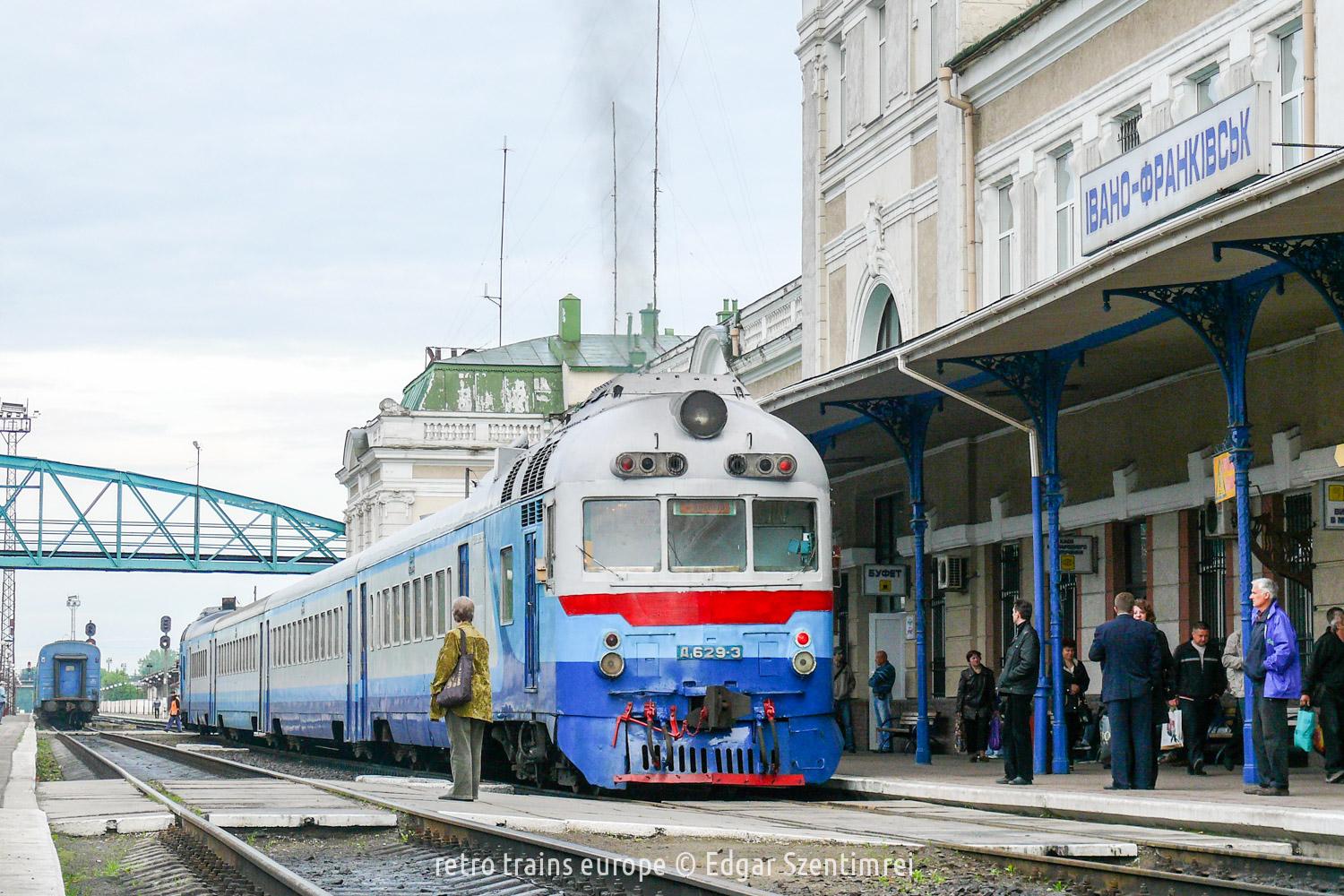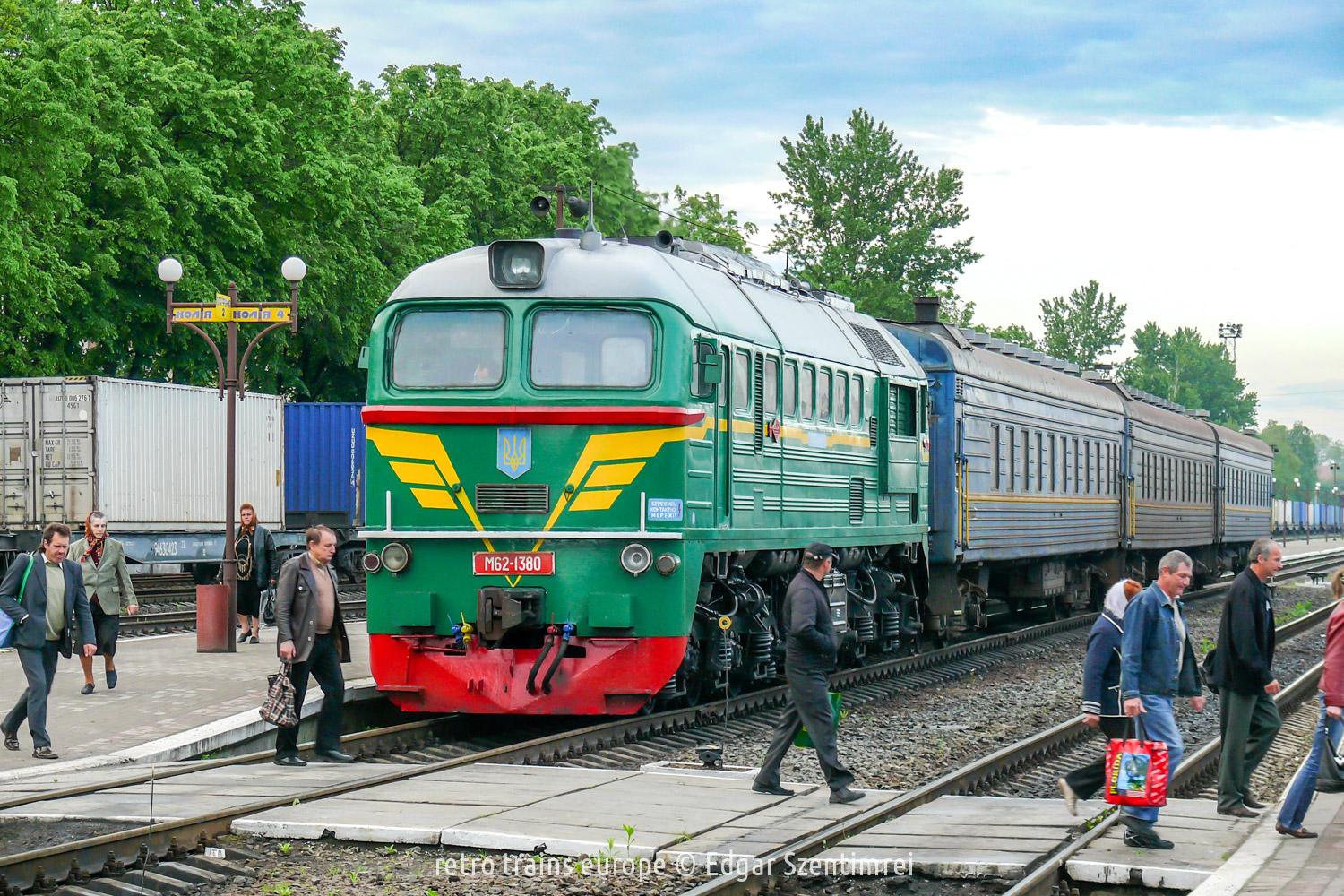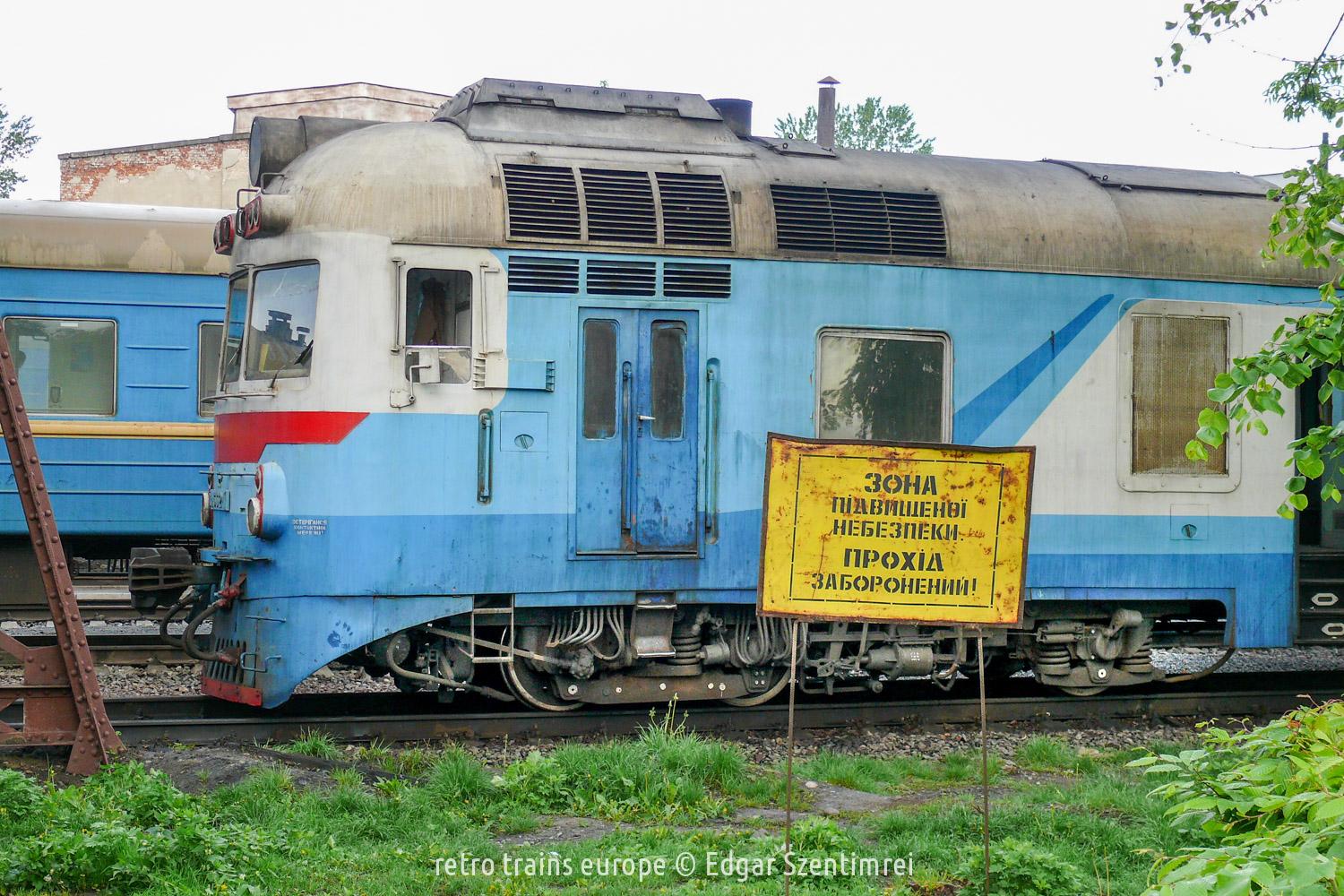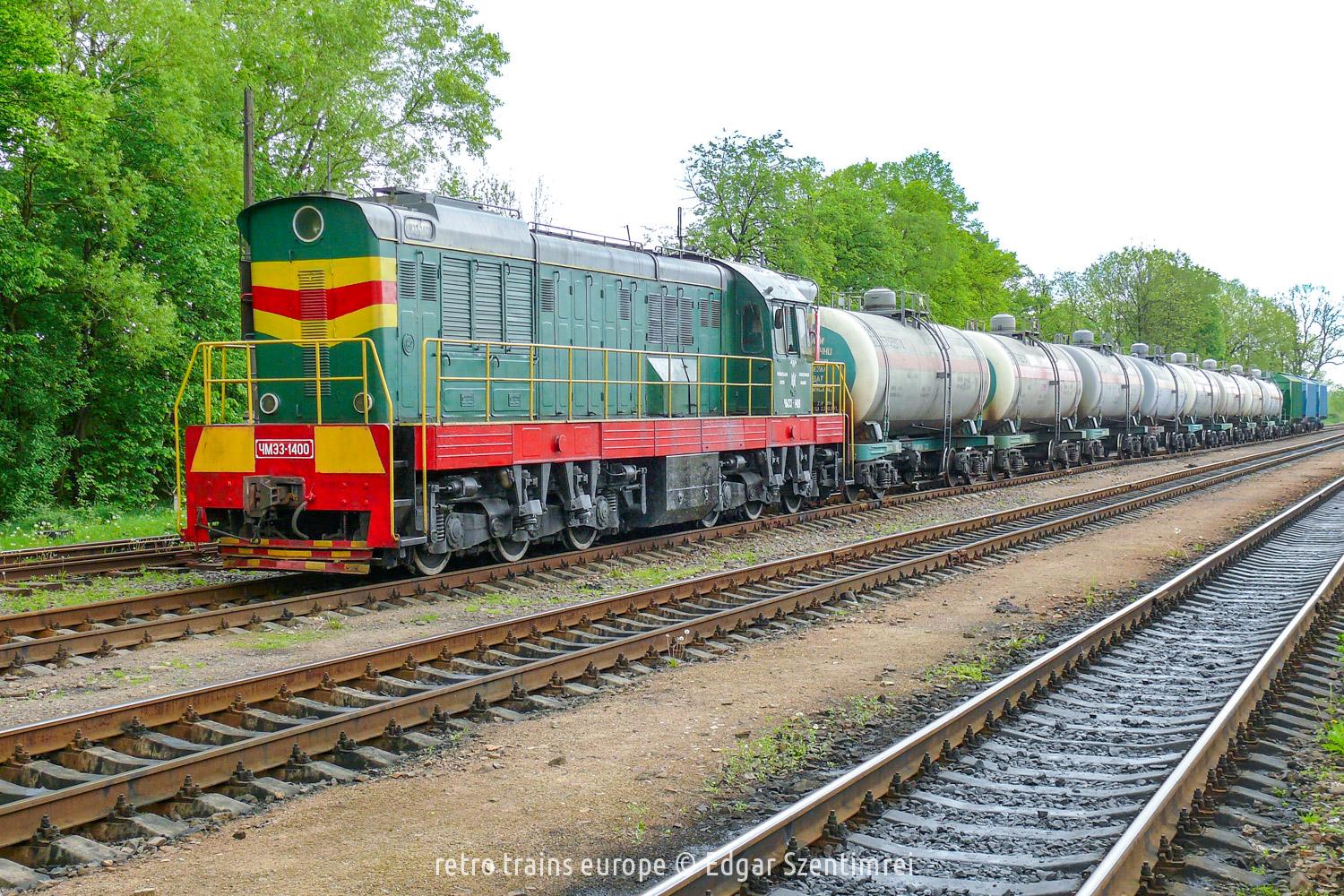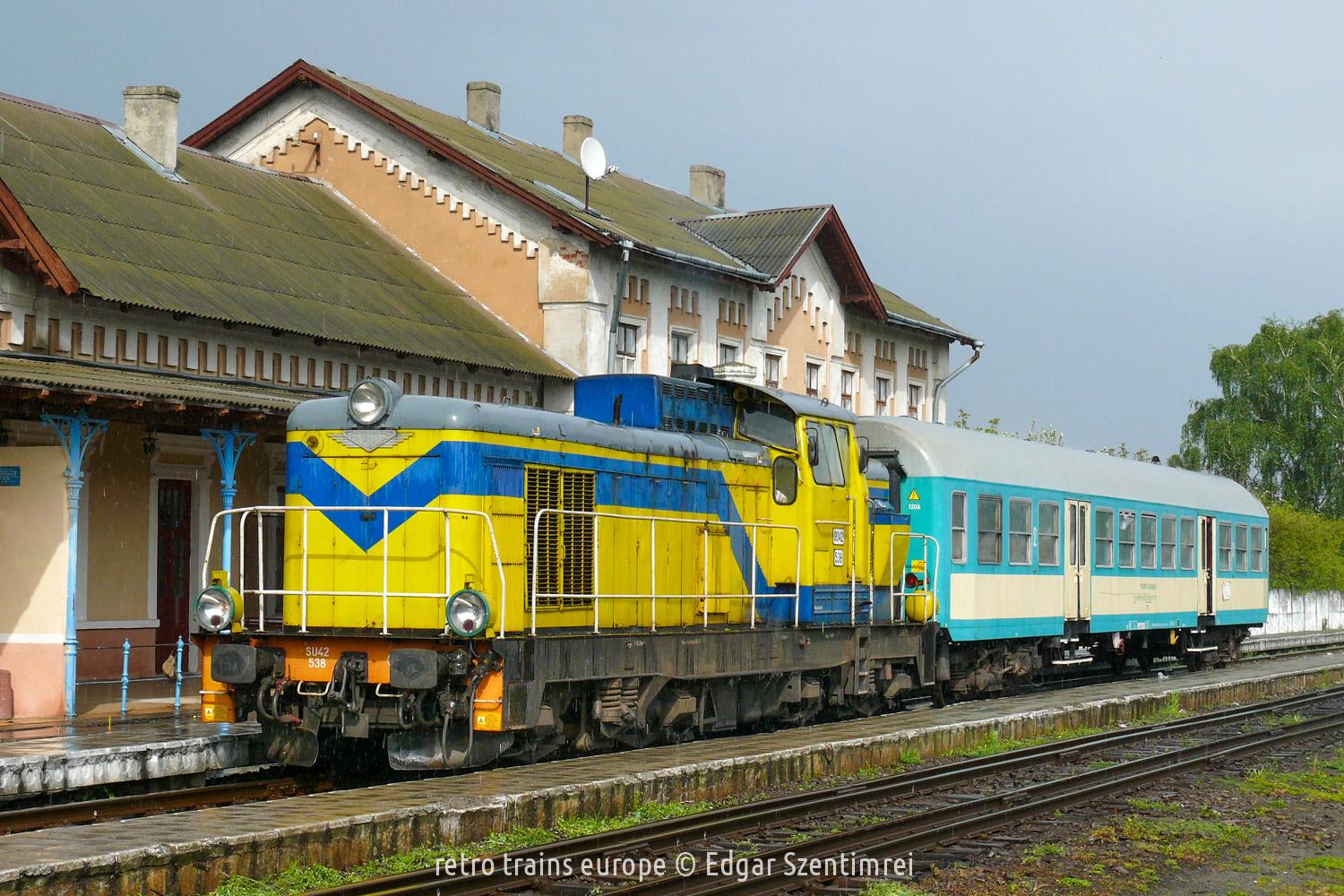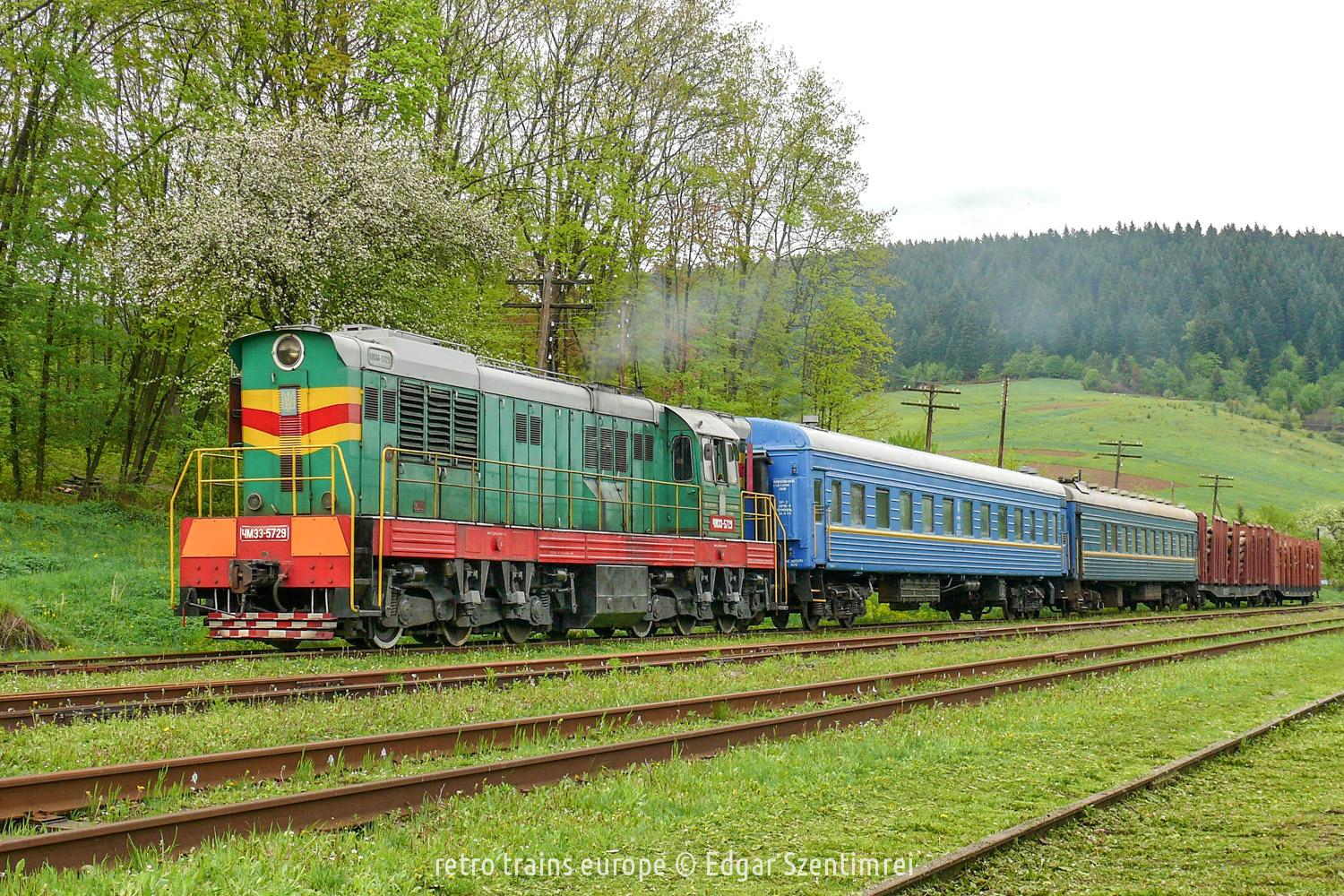Ivano-Frankivsk - Dolyna - Stryi - Khyriv - Starzhava / Ukraine, 8 May 2010
Somewhere in Western Ukraine, in the shadow of the Carpathians, time seemed to stand still in 2010. The station at Ivano-Frankivsk and the surrounding branch lines moved at their own quiet pace—rusted tracks, faded locomotives, and slow-moving trains preserved the rhythm of a bygone era. Back then, it may have felt like just another ordinary day. Now, in the noise of war, that stillness feels almost dreamlike.
Massive Diesel Trains for Suburban Traffic -- Ivano-Frankivsk is a city with a population of 240,000 and a developed heavy industry, but it is located farther from the busier main lines, which is why the electrification of the railway tracks has been delayed. From the passenger railway station, trains depart in four directions: Lviv, Stryi, Rakhiv, and Chernivtsi, and interestingly, all of them are of different types. -- Ivano-Frankivsk, 8 May 2010, 6:50
Who is arriving from Kyiv? -- Suddenly, uniformed railway workers and railway policemen appeared on the platform. Even before the arrival of the night train Kyiv, a sense of excitement was in the air. Perhaps no important person is arriving from the capital this time, but this is the train on which such a person could arrive. -- Ivano Frankivsk, 8 May 2010, 06:59
Local Workforce -- The sleeping cars of the train to Kyiv spend the entire day at the local maintenance base. Before the return journey, the cars are cleaned, the bedding is washed, and supplies are restocked. The double M62 locomotive has already been detached, and a 'ChME3' shunter is used to move the cars to the depot. -- Ivano Frankivsk, 8 May 2010, 7:20
The shortest train of the day -- A few minutes later, the local passenger train from Delyatyn arrived, too. The doors of the passenger cars are narrow and set high, so passengers are getting off slowly. However, since it's Saturday, it's unlikely that large crowds are still waiting to disembark from the three cars. Ivano Frankivsk, 8 May 2010, 7:27
Public service, as usual -- A regional, or as they call it here, suburban train arrived from Chernivtsi, 130 kilometers away. But this train was a bit different from the others: the five suburban passenger cars were pushed and pulled by two six-axle diesel locomotives — real monsters, and a bit of overkill for such a modest train. Just wait a sec, you'll see them soon. -- Ivano Frankivsk, 8 May 2010, 7:28
A New Page for the Driver’s Log -- The crew of the late-morning Ivano-Frankivsk–Stryi train is getting ready for departure. The D1 diesel train is still parked at the locomotive depot — fully fueled, no doubt. On the driver’s desk: a bottle of mineral water, an open pack of cigarettes — the typical companions of a train driver in Central or Eastern Europe. -- Ivano Frankivsk, 8 May 2010, 7:34
Zone of Extreme Danger -- Whenever Cyrillic text appears in a Hollywood action or spy movie, a chill runs down everyone’s spine. However, this caption draws attention to a real danger. No use, the local people are true action heroes, a simple caption can not stop them. They even crawl under the long trains if they can't go around them. Another interesting feature of the image is the three-axle bogie beneath the engine of the D1 motor car. -- Ivano-Frankivsk, 8 May 2010, 7:36
A Freight Engine Lends a Hand -- The commuter trains running between Kolomyia and Ivano-Frankivsk usually operate with a driving trailer and a matching blue-painted "half" 2M62 locomotive. But today, for some reason, the driving trailer was missing — and in its place, they hooked up the battered old no. 0931. The other half of the 2M62 may no longer exist, but this one still hauls small freight trains — for example, on the Rakhiv line, where a small turntable is used to rotate the locomotive, as it only has a cab at one end. -- Ivano Frankivsk, 8 May 2010, 7:42
Heading to Kolomyia -- The flashy paint job and the destination sign placed in the window make it clear that this locomotive is here to stay in passenger service. Quite a sight! -- Ivano Frankivsk, 8 May 2010, 7:46
Rustbuckets of the Second World -- On the other side of the Cold War divide, instead of the familiar Western European brands, it was all local machines on the move. Just as M62 locomotives ruled the rails, Moskviches and GAZ trucks were part of everyday street life across the former Soviet Union. -- Ivano-Frankivsk, 8 May 2010, 8:55
D1 Diesel Trains, the Fading Classics -- Between 1964 and 1988, a total of 605 D1 trainsets (comprising 1,210 powered cars and 1,330 trailer cars) were delivered to the Soviet Railways by the Budapest-based Ganz-MÁVAG factory. Once considered state-of-the-art, today it’s a small miracle that they’re still running. This morning, between Ivano-Frankivsk and Stryi, the D1 units no. 607 and 552 were operating together, coupled with a single intermediate trailer car. -- Pavlivka, 8 May 2010, 9:38
No Saving on Diesel -- When new, D1 trainsets consisted of two motor cars and two trailers. At first glance, two powered units might seem excessive, but one must remember that they were built to operate under the extreme conditions of the vast Soviet Union. It’s not uncommon to see only one engine running to save fuel, but as the smoke shows, when climbing these local gradients, there’s no saving on diesel. -- Maidan, 8 May 2010, 10:00
The Real Purpose of the Railway -- This album focuses mainly on passenger trains, but the low ticket revenue alone would never keep the line running, especially not a broad-gauge railway, which traditionally relies on heavy freight traffic. The real purpose of the railway here lies in serving the productive oil fields and chemical plants around Dolyna, and the freight train in the photo is very much a part of that story. -- Dolyna, 8 May 2010, 11:44
National Symbols of Ukraine -- The passenger trains may be outdated, but the station buildings have been beautifully renovated, just like anywhere else in Europe. Blue-and-yellow flags flutter on the façade, and even if you don’t notice it at first, the trident of the Ukrainian coat of arms is also present. -- Dolyna, 8 May 2010, 11:48
Strong, yet not forced -- The engineers at Ganz-MÁVAG in Budapest did an excellent job. The dimensions of the D1 diesel train are even more noticeable when standing next to the tracks, yet its appearance remains harmonious, preserving the spirit of the 1960s. The pair of 658 and 564 is the third D1 train of the day, meeting the train heading towards Stryi at station Morshyn and going back to Ivano-Frankivsk. -- Yavoriv, 8 May 2010, 12:44
Striking Similarities -- The ER2 electric multiple units were manufactured in Riga between 1962 and 1984, making them true contemporaries of the D1s. They also operate as suburban trains, though under 3000-volt direct current. The production number of 850 units is similarly massive, which was common in the Soviet Union. But somehow it looks so wide, likely due to the horizontally placed tail lights. -- Stryi, 8 May 2010, 13:31
Where we waited in vain for a beautiful train -- The spatial jump between Stryi and Khyriv would have been made memorable by an ER2 electric train, but only a modernized version passed by. However, the wait wasn't pointless: someone ate his sandwich, while someone else looked through his photos. And of course, others were watching the old ZIL in military paintwork. -- Drogobych, 8 May 2010, 14:33
Thunder and Lightning – Where cold and warm air masses meet, just like the border of the great empires, we can witness the unimaginable. So it is at the Polish–Ukrainian border, where the European 1435 mm and the Russian 1520 mm railway gauges intertwine. It used to be a major railway line of the Austro-Hungarian Monarchy, but this section lies today on Ukrainian territory. However, the standard gauge track has been preserved, so in theory, standard gauge trains could still run along the full route, connecting Zagórz and Przemyśl. In practice, they don’t, Polish trains only run as far as this station. -- Khyriv, 8 May 2010, 16:41
The Ukrainian Han Solo -- The cross-border passenger train runs between the Ukrainian station of Khyriv and the Polish station of Ustrzyki Dolne, but border checks are carried out at the state border, next to the road border crossing station. There must be some reason why it hasn’t occurred to customs officers to take a look around the railway stations as well, but this way, smugglers can shamelessly hide their bags, presumably filled with cigarettes. -- Khyriv, 8 May 2010, 16:48
Narrow Gauge, Seen from Ukraine -- In Ukraine, even the smallest branch lines tend to have longer trains, while in Poland, these short, single-car locomotive-hauled sets are quite common. Another interesting detail in the picture is the dual-gauge track with four rails, where the Polish locomotive can run around. -- Khyriv (Chirów), 8 May 2010, 16:52
Do Mixed Trains Still Exist Here? -- Shortly after the international train to Poland passed, a local train arrived at Starzhava station, where the broad-gauge track ends. Coupled behind the passenger wagons were two freight wagons loaded with timber, most likely from Khyriv. The train is scheduled to depart for Sambir in the evening, and the freight wagons were brought along now to avoid a lengthy shunting maneuver, sparing the passengers the loss of time during the journey back. Organising mixed trains is a complicated thing, no wonder they’ve disappeared from almost everywhere. -- Starzhava, 8 May 2010, 17:53
They Simply Forgot About It -- There’s really no other reasonable explanation for why rail service still exists in this insignificant corner of vast Ukraine. We are in a part of Europe that suffered enough from the storms of history, yet this station is simply wonderful, as if time had stopped since the day it was built. -- Starzhava, 8 May 2010, 18:01
